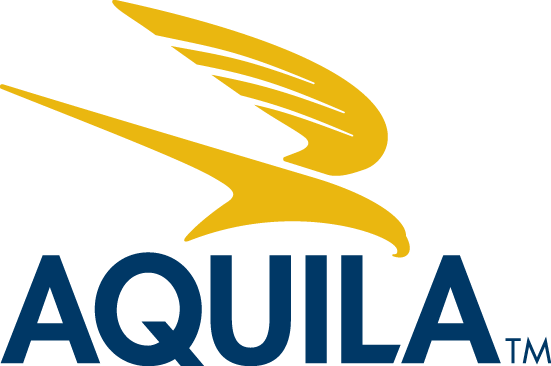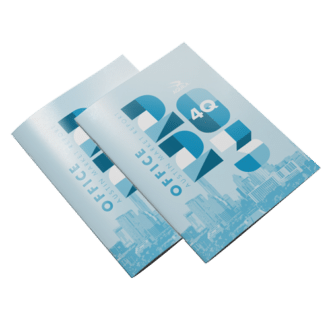Are you looking to work with a commercial brokerage firm to help you sell, purchase or lease property? If so, there are a variety of ways you can go about identifying, researching, and hiring the best brokerage team to suit your needs, such as an RFP.
One of the most popular options is going through a formal bid (RFP) process. A competitive bid process formalizes the vendor selection process and provides a structured approach for you to manage the vetting and hiring of each potential firm.
At AQUILA, we have participated in numerous formal bid processes and have even helped our clients use these processes to hire in our market and other real estate markets. We’ve learned a lot through this, so we wanted to share the insights we have.
In this article you will learn:
- Whether or not using a formal bid process is right for your company
- What a standard bid process looks like, from Request for Proposal (“RFP”) to vendor selection
- What should be included in your Request for Proposal
Is a formal RFP process right for my company?
A formal bid process, often referred to as an RFP (Request for Proposal) or RFQ (Request for Qualifications), is simply a structured way to get proposals from, interview, and ultimately select a brokerage firm.
Most companies do not use a formal bid process to hire a firm for brokerage services. Of all the pitches we prepare a year, generally only one or two involve a formal bid process. Typically we see companies take a more informal route.
The exception to this is in the government, education, and non-profit industries. These types of organizations often have bylaws or statutes that require them to go through a competitive bid process.
That said, any company, big or small, can use a formal bid process to hire a brokerage firm.
There are many advantages and disadvantages that come with employing a formal bid process for brokerage services.
We’ve detailed some of the pros and cons:
Pros of Hosting a Formal RFP Bid Process
There are many advantages to hosting a competitive bid process. Here are a few:
- Ensures thorough vetting of potential vendors – Going through this process allows you to check all the boxes to make sure you’ve hired the best vendor for your needs. Having a structured vetting process can help prove to council members, board members, executives, stockholders, etc. that you did your research and chose the best option.
- Allow for multiple stakeholders to weigh in – A formal process often makes it easier to ensure more voices are heard during the vendor selection process. By making sure key stakeholders are involved in reviewing the RFP and are included in the interviews, can help you make sure everyone is on the same page. As we’ll discuss later, you can also use methods to weigh the opinions of certain stakeholders more than others when going through the scoring phase. Of course, this can be done in an informal process as well, but often it’s easier to manage in a formal situation.
- Can help you select multiple vendors or create a list of “preferred” vendors – Sometimes formal bid processes are also used to choose more than one vendor. Often this is used by governmental organizations to have a list of “preferred vendors” who are vetted and ready should a project arise. Having a bevy of preferred vendors allows you to reduce lead times once a project arises so you can move quicker than if you had to go through a formal bid process every time.
- May lead to more competitive pricing/fees – Most fees for brokerage services are standard in each market, but in rare cases, if you are looking to sell a property, going through a formal process can provide enough competition to cause brokerage firms to consider reducing their fees, especially if you are a governmental agency or non-profit organization.
You are most likely to receive a fee discount from a broker representing you in the sale or lease of a property, as these fees will come from you.
If you’re looking for tenant representation services or to purchase a building, the fee paid to the broker is typically paid by the landlord or seller, and therefore your broker will be unlikely (or unable) to offer a discount.
Additionally, if you are leasing out or selling a property, you should not expect to discount the fees that you will be paying to the purchaser or tenant’s broker, as you do not want them to be less motivated to bring you a tenant.
For more information about how brokerage fees are calculated and who pays them, read our cost articles:
- How Much Does it Cost to use a Tenant Representation Broker? (Fees/Process/Benefits)
- Cost to Hire a Commercial Project Leasing Broker
- How Much Does it Cost to Use a Broker to Buy or Sell a Property?
Cons to Hosting a Formal Bid Process With an RFP
Here are some of the reasons you may consider ditching the formal process in favor of a more informal approach:
- It’s time-consuming – Going through a formal bid process simply takes more time than doing it informally. There is a lot of prep work that goes into it, such as writing a request for proposal, hosting interviews, and calling references. You may do some of these things when hiring a firm informally, but there is usually more behind-the-scenes work to do when administering a formal process.
- It will take longer – Not only will it take more of your time to execute, the formal nature usually means it will take more time to get to the end goal of hiring a vendor. In order to give potential vendors enough time to prepare proposals to fit your specifications and create tailored presentations, you have to build adequate time into your project schedule. If you choose to go a more informal route, many brokerage firms have standard pitches/presentations they can more quickly tailor to your company to move the vetting process along quicker.
- You may limit your potential vendors – By choosing to host a formal bidding process, you may have a smaller number of firms who want to participate. Preparing a proposal that meets your specific requirements as detailed in your RFP takes time and resources, and, as such, not every firm that you are interested in working with may take the time or have the resources to submit a proposal, thus limiting your options. Also, if your project isn’t large enough, you may not have quality firms participate. That said, there are things you can do to make your RFP easy to read and respond to, and we’ll talk about that below.
Read Now: 5 Key Questions to Ask Before Hiring a Tenant Representation Broker
So should you use a formal bid process? It truly depends on your goals. Here are some questions to ask yourself before making the decision:
- Does my company/organization require it?
- Do I have ample time to host a formal bid process?
- Is my project big enough to merit a formal bid process?
- Am I looking for a structured way to manage the hiring process?
- Am I looking for a way to hire more than one vendor or create a preferred vendor list?
- Do I have multiple stakeholders that need/want to weigh in on vendor selection?
If you check more than one of these boxes, then you may consider hosting a formal bid process.
What does the RFP process to hire for brokerage services look like?
Now that you’ve decided a formal bid process is right for your company or organization, let’s dive into what that process looks like, step by step.
Step 1: Assemble an RFP Committee
Your first step is to identify a committee of stakeholders that will need to be involved at each step of the formal bid process. This committee will participate in interviews with proposers and ultimately help guide the selection of the chosen vendor.
Defining roles early in the process will make things go a lot smoother and keep things on schedule. Some questions you’ll need to answer are:
- Who will write the RFP (Request for Proposal)?
- Who needs to review the RFP?
- Who will handle communications with respondents?
- Who will be included in the interviews?
- Are there certain requirements proposers must meet before responding?
- Who has the final decision on selecting a vendor?
While some of these might change over the course of the process, having them discussed upfront can help you avoid a last-minute change that forces you to start the process over again.
Step 2: Define an RFP Schedule
The next step in preparing a formal bid process to hire for brokerage services is to define your schedule. This schedule will typically be included in your RFP, and possibly distributed before the RFP is released.
Putting forth a schedule is important because it sets clear deadlines and keeps respondents on a level playing field.
Here is what a schedule might look like:
| Action | Date |
| RFP Release | Day 0 |
| Property/Site Tours | RFP Release + 7 to 14 days |
| Respondent Questions Due | RFP Release + 7 to 14 days |
| Pre-Bid Conference Call (or Meeting or Email) | Questions Due + 3 to 10 days |
| Proposals Due | RFP Release + 14 to 21 days |
| Shortlist Announced | Proposals Due + 14 to 21 day |
| Interviews | Shortlist Announced + 10 to 14 days |
| Winner Announced | Interviews + 3 to 14 days |
Again, this is just one sample timeline. Depending on your project and the complexity of the RFP you issue, the timeline could be longer or shorter. Typically you’ll want to give firms at least two to four weeks to prepare initial proposals and at least one to two weeks to prepare presentations if they are invited to interview.
If you need to move quickly, these timeframes can be expedited, but in our experience, you get better, more comprehensive proposals and presentations if you give your potential vendors adequate time to prepare.
Step 3: Draft your RFP
After establishing your team and defining your schedule, the next step is to draft your RFP.
For a full guide on what to include in your RFP, skip to the section below regarding “What should I include in my RFP for brokerage services?”
Step 4: Research Companies to Invite to Participate
Note: This step may take place concurrently while writing your RFP.
In order to get the most and best-qualified vendors to respond to your proposal, you’ll need to do some research and identify firms and contacts within those firms to who you can send the RFP.
You can do this by doing internet research, asking for referrals internally, and asking friends at other companies. For larger companies and governmental organizations, you might also be able to rely on your purchasing department to make recommendations. In rare instances, you may be required to send the RFP to each real estate company in your city.
If you have any requirements as to Historically Underutilized Businesses (HUB) in your RFP, be sure to find firms that meet these standards to include on your list.
Pull together a list of contacts, their companies, and email addresses and save it for when it comes time to issue your RFP.
Read Now: 8 Best Commercial Real Estate Companies in Austin, Texas
Step 5: Issue the RFP
This next step is easy if you’ve followed the plan. Simply take the RFP that has been approved by your team and email it out to the companies you are inviting to participate. Additionally, many companies or organizations will post it publically on their website.
Step 6: Optional – Tour Site or Property
If the RFP you are issuing refers to a specific property or properties, it can be helpful to give your respondents access to the site prior to submitting their proposals. This is particularly helpful for sale listings or redevelopment opportunities.
Step 7: Collect & Respond to Questions
While this step is not required, many organizations include it. There are three primary reasons for this 1) to organize the questions received 2) to provide consistent responses, and 3) to keep the playing field level for all respondents.
Taking questions can also serve as an early indicator of which and how many vendors will respond to your RFP.
The process is simple. Basically, you will put someone in charge of collecting questions from potential vendors. Your internal team will review and answer the questions, and then, either via email, meeting, or conference call, issue the answers to all vendors.
Typically questions are due a week to two weeks after the proposal is issued, and answers are given shortly thereafter.
Step 8: Create a Shortlist
After receiving your proposals, you should distribute copies to each stakeholder for review and give them a deadline by which to have the proposals read and reviewed.
When reviewing proposals, have stakeholders put together questions they have both generally and on specific proposals. (This will come into play later.)
It can be very helpful to give each stakeholder a scoring sheet so they are able to judge each proposal based on the criteria and scoring system set forth in the RFP.
Next, you along with your committee of stakeholders will create a shortlist of firms to interview. Usually, a shortlist includes anywhere from 2-4 firms. How many you select will depend on the quality of the proposals received, the number of firms that submit, and if you plan on awarding the bid to one or more firms.
Step 9: Conduct Interviews
Once a shortlist is finalized, contact those that have been chosen to move forward and schedule interviews.
This is where those questions come into play. We have found that many organizations will include with their interview request a list of questions, both general and specific to that vendor’s proposal, that the vendor should be prepared to address in the interview.
These interviews are generally in-person but can also be conducted over Skype or another web-conferencing service if schedules necessitate it.
Step 10: Check References
We always recommend checking references before choosing a brokerage firm to hire. Be sure to ask for these in your RFP so you have them at hand.
This is usually done alongside the interview stage so that you can consider these references alongside the proposal and interviews when selecting your final vendor.
Generally, it’s good to put one person in charge of all references so they can relay the information to the selection committee.
Step 11: Compare Vendors, Award Bids, Negotiate/Execute Services Agreement
Once interviews are completed, it’s time to make a selection. Again, use your score sheets as a reference to help make your selection.
Once you have selected your vendor and awarded your bid, we do not recommend notifying the firms that you chose not to select until you have a services agreement in place with your selected vendor.
Take the time to work through any items that may need negotiating, and once you have a signed agreement, it’s courteous to inform the non-winners
What should be included in my RFP for Brokerage Services?
A brokerage services RFP will typically include the following sections:
- Project Overview
- Instructions to Proposers
- Proposal Content
- Vendor Requirements
Keep reading to understand what may be included in each section.
Project Overview
In the project overview, you will lay out the scope of services you are looking for as well as any pertinent history on your company or this project specifically.
This part of the RFP should give a high-level view of the services you’re looking for and the specific project (should one exist) that they would be working on.
Sections that might be included in the project overview might include:
- Project Background
- Company/Organizational Information
- Project Scope
- Goals & Objectives
- Bid Contact
Instructions to Proposers
The goal of this section is to outline all the information proposers will need to respond to your proposal. It’s important to be as detailed as possible in this section. The instructions to the proposers will typically include:
RFP Schedule & Selection Process
This is the schedule you outlined above. Replace the days with actual dates. Add any other pertinent details about the selection process such as limitations on direct contact between respondents and members of the RFP committee or other details.
Proposal Format
Outline what format you’d like the proposals in. This refers to both size (8.5”x11” is standard) and orientation (portrait or landscape). Many RFPs also detail whether proposals should be bound or submitted in binders.
Some even get as specific as specifying font size, spacing requirements, maximum page counts, single versus double-sided printing, tabbed sections, etc.
You should also specify if you would you will require print copies, digital, or both. Typically issuers require print copies, with digital copies to be submitted on a flash drive or via email.
Proposal Copies
Outline how many copies of the proposal you would like. Generally, you will ask for one for each stakeholder and one original copy for your records. Most proposals require that the original copy (the one that includes wet signatures\) be specifically marked “Original.”
Submission Deadline & Guidelines
In this section, it is typical to give a time for the deadline as well as a date. Typically times are either 12 p.m. or 5 p.m. When listing a time it’s also important to include the time zone such as CST.
This is also where you will specify a physical address or email address where the proposals are to be delivered.
Often we see organizations request a time-stamped signature of receipt and that the proposal(s) must be received by the deadline, not postmarked by the deadline. Also, if you’d like to be extra strict, add “No late entries accepted.”
Proposal Evaluation Criteria
Explain to proposers how you will evaluate their submissions. Typically this will break down the information requested in the proposal content section and give weight to the importance of each item. This will allow proposers to understand better where you want them to focus their attention in the proposal.
Here is an example:
| Criteria | Weight |
| Understanding of Project | 25% |
| Past Experience | 25% |
| Qualifications of Team | 25% |
| References | 10% |
| Cost/Fees | 10% |
| Follows Proposal Guidelines | 5% |
If there are any minimum requirements, include these here. Minimum requirements can be useful to include if you want to weed out underqualified candidates ahead of time.
You may also include who will be reviewing the proposal. This can be given in the form of names or simply titles.
RFP Proposal Content
This is the heart of your RFP. This is where you will detail exactly what prospective vendors should include in their proposals. This section should be highly tailored to your company or organization’s needs.
For ease of comprehension, companies typically require that each item be addressed in the specific order listed in this section.
Here are some examples of what you may see in this section:
- Proposer overview & qualifications
- Company information
- Company overview & history
- Organizational chart
- Company ownership information
- HUB designation (Or any other designations that your company may be inclined to work with.)
- Team
-
- List of specific team members who will work on your project
- Individual experience & resumes
- Proof of brokerage and/or salesperson license
- List any outside specialists or consultants who will be on the project
- Define a specific point of contact
- List of specific team members who will work on your project
-
- Experience
- List of similar projects with relevant details (size, location, price, etc.)
- References
- Other Information
- Proof of financial stability
- Any current or recent lawsuits
- Insurance requirements
- Company information
- Scope of Services
- Describe the work the firm will do for your company
- Include details about methodology
- Explain the process behind each service the firm will provide for your company
- Understanding of and ability to meet Scope of Services defined in RFP
- Describe (and include samples) reports that will be provided throughout the process (optional)
- Describe the work the firm will do for your company
- Cost Proposals (optional)
- Include a straightforward, concise pricing structure for each service to be provided
Vendor Requirements (HUB – Historically Underutilized Business, etc.)
In this section, include any requirements that your organization may have as it relates to specific vendor requirements.
Examples of this may include:
- HUB (Historically Underutilized Business) Declaration and/or other required documents
- Ethics Affidavit
- Vendor Registration
- Conflicts of Interest
- Certification of Eligibility
- Insurance Coverage
Now that you understand the formal bidding process, you are ready to hire for brokerage services. Check out our ultimate guide to hiring a tenant representation broker.

Or, to keep learning about the process of hiring a broker, check out these helpful articles:
- 5 Key Questions to Ask Before Hiring a Tenant Representation Broker
- How Much Does it Cost to Use a Tenant Representation Broker?
- How Much Does It Cost to Use a Broker to Buy or Sell a Property?
- 8 Best Commercial Real Estate Companies in Austin, Texas













